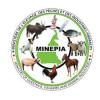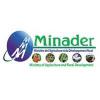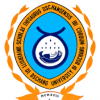The spectrum of skin diseases in a rural setting in Cameroon (sub-Saharan Africa).
| Titre | The spectrum of skin diseases in a rural setting in Cameroon (sub-Saharan Africa). |
| Publication Type | Journal Article |
| Year of Publication | 2012 |
| Authors | Bissek A-CZoung-Kany, Tabah ENjih, Kouotou E, Sini V, Yepnjio FN, Nditanchou R, Nchufor RN, Defo D, Dema F, Fonsah JY, Njamnshi AK, Muna WFT |
| Journal | BMC Dermatol |
| Volume | 12 |
| Pagination | 7 |
| Date Published | 2012 Jun 21 |
| ISSN | 1471-5945 |
| Mots-clés | Adolescent, Adult, Age Distribution, Cameroon, Child, Female, Humans, Male, Middle Aged, Prevalence, Rural Population, Sex Distribution, Skin Diseases, Young Adult |
| Abstract | BACKGROUND: Skin disorders are generally considered to be more prevalent in the rural areas of Cameroon. This study was carried out to verify this assumption by describing the spectrum of skin disorders in a rural setting of Cameroon. METHODS: We carried out a community-based clinical skin examination of 400 consenting subjects from 4 villages of Cameroon: Nyamanga (27%), Yebekolo (24%), Mbangassina (23%) and Bilomo (26%). RESULTS: The overall prevalence of skin diseases in our sample was 62% {95% CI: 57.2%, 66.8%} (248/400). The commonest skin disorders were: fungal infections (25.4%), parasitic infestations (21.4%), atrophic skin disorders (11.7%), hypertrophic skin disorders (9.7%), disorders of skin appendages {acne} (8.9%), benign neoplasm (6.5%), bacterial skin infections (5.2%), pigmentation disorders (4.8%), and dermatitis/eczema (4.0%). Skin infections and infestations constituted 52.82% of all skin disorders. The overall prevalence of infectious and parasitic infestation was 32.75% {95%CI: 28.17%, 37.59%} (131/400) as against 29.25% {95%CI: 24.83%, 33.98%} (117/400) for non-infectious disorders.Among people with skin infections/parasitic infestations, those with fungal infections and onchocercal skin lesions were the most prevalent, accounting for 48.1% (63/131) and 35.1% (46/131); and an overall prevalence of 15.75% {95%CI: 12.3%, 19.7%} (63/400) and 11.5% {95%CI: 8.5%, 15.0%} (46/400) respectively.There was secondary bacterial infection in 12.1% {95%CI: 8.31%, 16.82%} (30/248) of subjects with skin diseases. Hypertrophic and atrophic disorders of the skin were mainly keloids (9.68%), scarification marks (6.05%) and burn scars (5.65%). Skin diseases like dermatitis and eczema (4.03%), malignant tumours and pigmentation disorders were rare in our sample.The proportion of subjects diagnosed with skin disorders after examination (62.8%) was significantly higher than the proportion of 40.8% that declared having skin diseases (p < 0.0001). CONCLUSION: The prevalence of skin diseases in the rural Mbam valley is alarming, dominated by easily treatable or preventable skin infections and their magnitude is highly neglected by the community, contrasting with findings in the urban setting. Similar studies are needed in other ecological/demographic settings of the country in order to construct a better understanding of the epidemiology of skin disorders. This would lead to the development of national policies to improve skin care. |
| DOI | 10.1186/1471-5945-12-7 |
| Alternate Journal | BMC Dermatol. |
| PubMed ID | 22720728 |
| PubMed Central ID | PMC3445843 |











